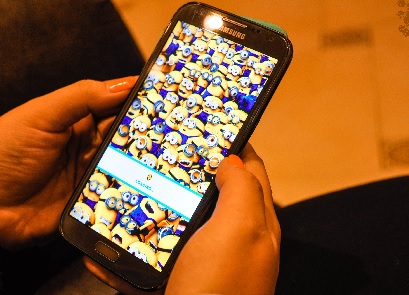The social media giant is broadening its Audience Network outside the reach of its platform.
Facebook has announced that it is expanding its Audience Network to make it possible to deliver interest based mobile ads to smartphone and tablet users who either aren’t members of its social media platform and to those who simply aren’t signed in.
The goal is to be able to further solidify Facebook’s position as the second biggest mobile advertising network.
According to the social network, it will be able to obtain enough usable data about non-Facebook users or users who aren’t logged in, through its own technology, to make it possible to generate relevant interest based mobile ads to serve to those individuals. Those mobile ads will be displayed to smartphone and tablet users via various apps and partner sites.
This is accomplished through the Facebook Audience Network (FAN), which was initially created in 2014 and makes it possible for mobile marketers to place targeted ads in Facebook’s signature style onto various mobile friendly partner sites and apps.
These interest based mobile ads will help to keep Facebook just behind Google in smartphone advertising.
 According to Facebook, among all the impressions received on FAN, 80 percent of them are native. Within the mobile app ecosystem, Facebook has said that 6 percent of all time users have spent on mobile applications is on apps that are partners in the FAN. Back at the start of this year, the social network announced that Q4 2015 had a $1 billion annual revenue run rate. Comparatively, that same figure for Google Network was $4.14. Though Facebook still has less than a quarter of the Google mobile ad revenue, it is still the next closest to that top spot.
According to Facebook, among all the impressions received on FAN, 80 percent of them are native. Within the mobile app ecosystem, Facebook has said that 6 percent of all time users have spent on mobile applications is on apps that are partners in the FAN. Back at the start of this year, the social network announced that Q4 2015 had a $1 billion annual revenue run rate. Comparatively, that same figure for Google Network was $4.14. Though Facebook still has less than a quarter of the Google mobile ad revenue, it is still the next closest to that top spot.
Among FAN’s strong points is that it is able to glean granular data from Facebook users, of which there are 1.6 million actively using the platform around the world. That said, it can now step beyond that specific group of people and may be able to strategically obtain data of the right quality in order to ensure that the targeting accuracy will remain high.
Recently, Andrew Bosworth, the Facebook vice president of ads and business platform explained the importance of interest based mobile ads. He said that “One of the things we’ve heard from people is that many of the ads they see are annoying, distracting or misleading. We think companies can do better, and that’s why we’ve been focused on improving ads both on and off Facebook.”


